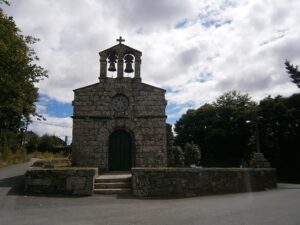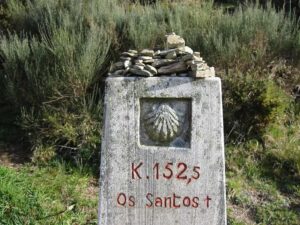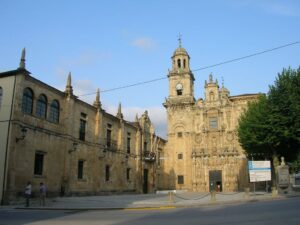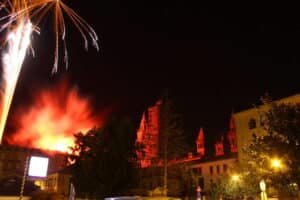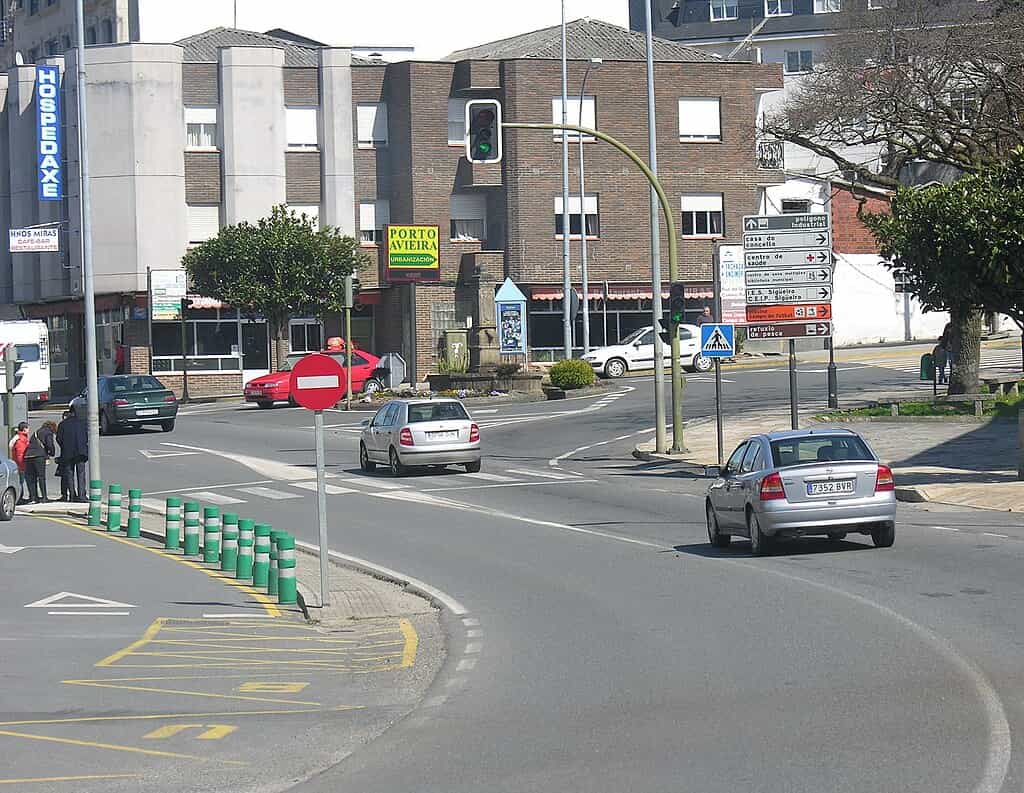
If you are walking the Camino de Santiago and arrive in Sigüeiro, you have reached a key point before finishing your journey. In fact, this is the starting point of the final stage of the English Way. This charming village, located by the Tambre River, is not just a stopover; it is a place rich in history and natural beauty that is worth exploring.
In this article, we will show you the most interesting places to visit in Sigüeiro, from its medieval bridge to its spectacular natural surroundings. Are you ready to discover everything this destination has to offer? Keep reading!
Índice de contenidos
- 1 Sigüeiro: the Beginning of the End of the English Way
- 2 Sigüeiro and the Camino de Santiago: a Historical Link
- 3 The Bridge of Sigüeiro: A Testament to the Past
- 4 Tambre River Park: Nature at its Best
- 5 Church of San Andrés de Barciela
- 6 Other Points of Interest in Sigüeiro: the Mámoas
- 7 Festivals and Traditions in Sigüeiro
- 8 Local Cuisine
Sigüeiro: the Beginning of the End of the English Way
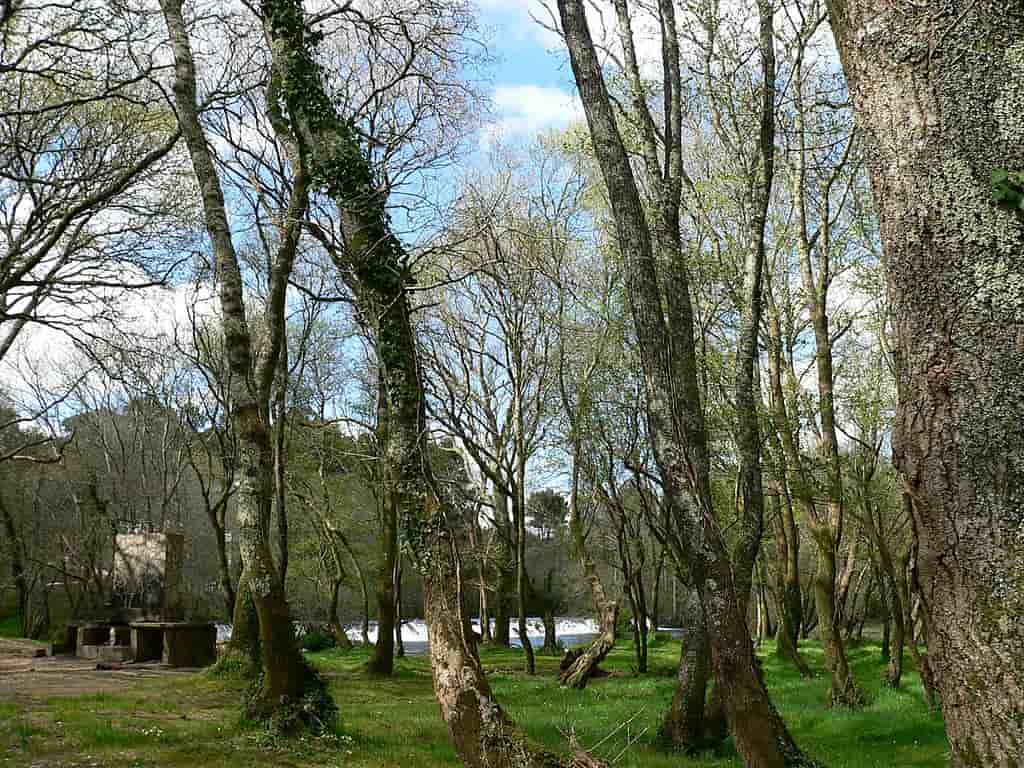
Sigüeiro is a crucial location in the final stage of the English Way, situated 16 kilometres from Santiago de Compostela, making it an essential stop for pilgrims. This tranquil village has served for centuries as a vital resting point for those undertaking the English Way: route from Ferrol, providing a place to unwind and prepare for the final stretch.
Historically, this location has played a fundamental role in the English Way: stages and guide, connecting pilgrims with their final destination in Santiago. The journey, which starts in Ferrol, finds here a welcoming environment with all the necessary services for those wishing to enjoy one last night before reaching Santiago.
The landscape surrounding Sigüeiro, dominated by the Tambre River, invites you to enjoy nature at its finest as you cross the ancient medieval bridge that has witnessed generations of pilgrims passing by.
Sigüeiro and the Camino de Santiago: a Historical Link
Sigüeiro is not only a key point on the English Way but also represents the connection between the various routes that make up the historic Camino de Santiago. Over the centuries, pilgrims from around the world have traversed different paths to reach Santiago de Compostela, and Sigüeiro has witnessed this constant flow of travellers.
To facilitate these experiences, there are complete travel packages for the Camino de Santiago that offer services tailored to the needs of each pilgrim, ensuring an enriching and worry-free journey.
- In addition to the English Way, there are other emblematic routes such as the pilgrimage on the Primitive Way, the oldest and one that offers an authentic experience. This route, starting from Oviedo, takes pilgrims through mountainous and rural landscapes, providing a unique opportunity for introspection and contact with nature.
- Another popular option is the French Way, where you can undertake a complete journey from O Cebreiro to Compostela, passing through towns rich in history and tradition.
- For those wishing to extend their journey, it is possible to continue to the end of the known world in ancient times, following the full route to Finisterre from Santiago. Here, legends merge with stunning views of the Atlantic Ocean.
The Bridge of Sigüeiro: A Testament to the Past
The medieval bridge of Sigüeiro, spanning the waters of the Tambre River, is one of the great historical treasures of the locality.
This bridge, built several centuries ago, has been a crucial crossing point for both pilgrims and local residents. Over time, the bridge has witnessed countless stories of people crossing it on their way to Santiago de Compostela.
With its sturdy and simple structure, it has remained virtually unchanged since its construction, making it a true relic of the past. Over the years, it has been restored several times to preserve its integrity, always respecting its original design.
Tambre River Park: Nature at its Best
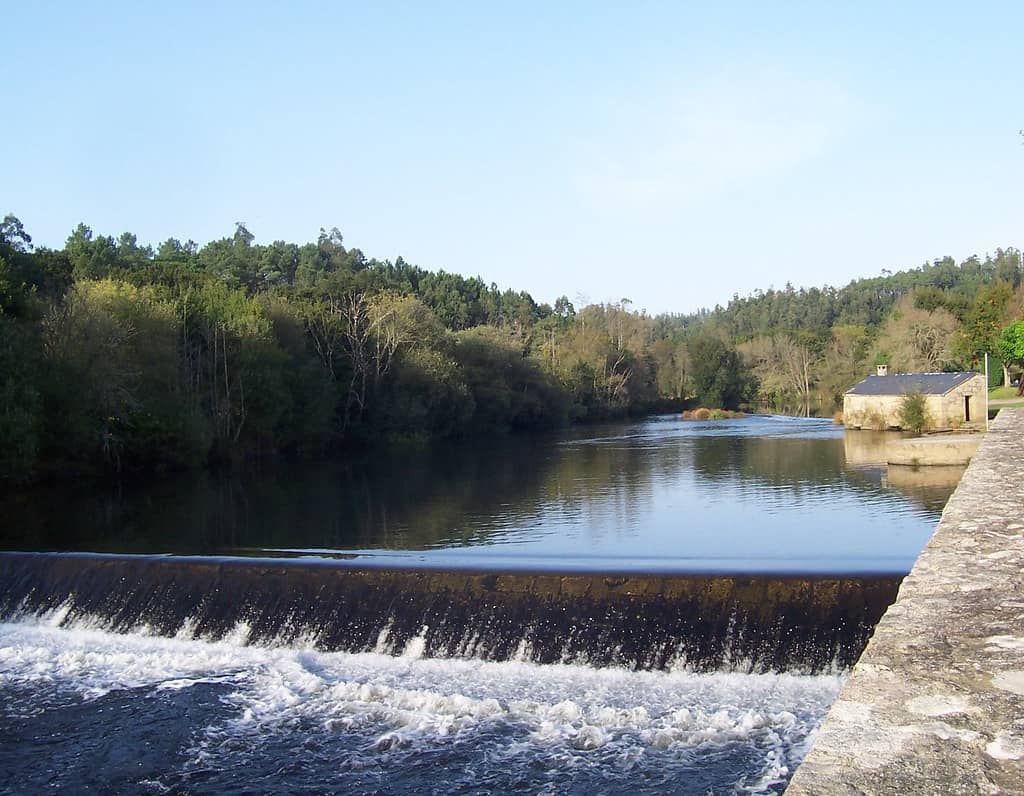
This is a natural oasis that surrounds the area, offering pilgrims and tourists a breath of fresh air in nature. The banks of the Tambre River are filled with lush vegetation, where you can find paths that invite peaceful strolls. This park is a perfect spot for those looking to disconnect and enjoy the tranquillity before continuing their journey to Santiago.
The park features picnic areas, rest zones, and panoramic views that encourage reflection and enjoyment of the Galician landscape. Additionally, its proximity to the village makes it an ideal option for those wanting to make the most of their time in Sigüeiro, whether to relax or to learn more about the natural surroundings.
Church of San Andrés de Barciela
This church, with its modest architecture, has been a place of worship for local residents and pilgrims for centuries. Its austere interior provides a space for contemplation and prayer, ideal for those seeking a moment of peace during their journey.
Over the years, the church has been a landmark for pilgrims following the Camino de Santiago. It offers not only spiritual refuge but also a connection to the religious traditions of the region. Its location in the centre of the village makes it easy to visit and a must-see for those wanting to learn more about the history of this site.
Other Points of Interest in Sigüeiro: the Mámoas
Sigüeiro is also known for its archaeological richness. One of the lesser-known but equally fascinating treasures are the mámoas, megalithic monuments dating back to the Neolithic period. These funerary structures, scattered throughout the municipality of Oroso, testify to the early human communities that inhabited the region over 5,000 years ago.
They are tumuli of earth and stone that cover one or more burial chambers. Inside, human remains and objects such as tools and pottery have been found, providing valuable insights into the cultural and ritual practices of our ancestors.
The Mámoa de Monte do Pino is one of the most notable and can be visited by following marked routes that traverse stunning landscapes.
Festivals and Traditions in Sigüeiro
Sigüeiro is a village that keeps its festivals and traditions alive, reflecting the identity and community spirit of its residents.
One of the most important celebrations is the Feast of San Cristóbal, the patron saint of the municipality, celebrated in July. During this festivity, the streets are filled with music, dance, and activities for all ages, including religious processions and cultural events.
Additionally, Sigüeiro participates in the celebrations of the Entroido, the Galician carnival, characterised by its colourful parades and costumes that combine humour and social critique. These festivities reflect the rich cultural heritage of the region and offer visitors an authentic and memorable experience.
Local Cuisine
Galician cuisine is one of the major attractions for those visiting Sigüeiro, and pilgrims and tourists cannot miss out on trying some of the region’s most traditional dishes.
- One of the most well-known is pulpo a la gallega, served with olive oil, paprika, and coarse salt, a delicacy found in many local restaurants.
- Another very popular dish is the Galician empanada, made with a variety of fillings ranging from meat to seafood.
In the establishments, you can also savour typical homemade desserts, such as the tarta de Santiago, a symbol of the region made with almonds, sugar, and eggs.

